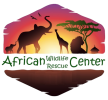Our Impact
SOCIAL, ECONOMICAL AND POLITICAL IMPACT AT A NATIONAL SCALE
has grown to become a leader in the conservancy sector in Cameroon, recognised as the voice of wildlife conservancies in the country. African WildlifeRescue Center currently has membership in the AWC Board, is a member of the National Wildlife Strategy Steering Committee and an accredited member of the CITES Rural Community Working Group.
has been at the forefront in ensuring conservancies are recognised and protected by the law, entrenching conservancies in the national policy framework, including the Wildlife Act 2013, Wildlife Policy 2017 (draft), Wildlife Regulations 2016 (Draft) and Community Land Act 2016. African WildlifeRescue Center has also led efforts to catalyse community input into the ongoing development of the National Wildlife Conservation Strategy to strengthen the growth of conservancies.
has consistently seek to encourage and facilitate networking among conservancy stakeholders in the country to share insights and best practices. To this end, African WildlifeRescue Center has launched a number of forums, such as the Conservancies Annual General Meeting, the Conservancy Managers’ Conference and the National Rangers Meeting as well as organised a series of regional conservation workshops.
has produced a series of conservation tools to support conservancy growth and harmonise management of conservancies. This include the Conservancy Establishment Guide, the Conservancy Managers’ Handbook, the Community Scouts Standard Operating Procedures, and most recently, the biennial Conservancies Status Report.
currently boasts of a full membership of more than 100 conservancies, occupying a total of approximately 600 hectares of wildlife conservancy land in the country. Though our membership we are able to directly impact an estimate of over 80 conservancy households in the country.

